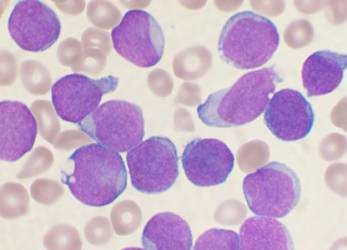SAN DIEGO (FRONTLINE MEDICAL NEWS) – Exposure to common household pesticides called pyrethroids almost tripled the odds of attention-deficit/hyperactivity disorder in boys, but not in girls, authors of a large cross-sectional study reported.
The results resemble findings from prior studies of mice, lead investigator Dr. Melissa L. Wagner-Schuman said in an interview. “Pyrethroids are the most commonly used pesticides for residential pest control and public health,” she and her associates said. “Given the growing use of pyrethroids and the perception that they are a safer insecticide alternative, our results may be of considerable public health import.”
Attention-deficit/hyperactivity disorder is more than twice as prevalent in boys as in girls, according to CDC data . The disorder is “highly heritable,” but environmental factors also play a role, the researchers said at the annual meeting of the American Academy of Child and Adolescent Psychiatry.
For the study, the investigators analyzed National Health and Nutrition Examination Survey data from 2001 to 2002 from 687 children aged 8-18 years. Children were categorized as having ADHD if they met DSM-IV criteria for the disorder on the Diagnostic Interview Schedule for Children caregiver module, had a diagnosis of ADHD reported by their caregivers, or both, the researchers said. Pyrethroid exposure was assessed by testing urine samples for a metabolite of several pyrethroids called 3-phenoxybenzoic acid (3-PBA), they noted.
Boys who had detectable levels of 3-PBA were 2.95 times more likely to have ADHD than were boys who lacked evidence of pyrethroid exposure (95% confidence interval, 1.07-8.08), said Dr. Wagner-Schuman, a pediatrics resident at Cincinnati Children’s Hospital Medical Center. “Effects in girls were smaller and nonsignificant,” she and her associates reported (adjusted odds ratio for girls with detectable biomarker levels, 1.54; 95% CI, 0.32-7.33). The analysis controlled for age; race or ethnicity; income; health insurance status; prenatal tobacco exposure; blood lead levels; urine organophosphate metabolite levels; and urine creatinine level.
Also in boys but not in girls, the odds of ADHD increased linearly with rising 3-PBA levels and did not plateau, the researchers reported.
In the mouse studies, pyrethroid exposure was found to trigger abnormalities in the dopamine system, which produced an “ADHD phenotype,” the investigators said. “Male animals appear to have a heightened vulnerability to exposure,” they added. Other studies have shown that prenatal pyrethroid exposure in humans can increase the risk of neurodevelopmental problems, the investigators noted.
The analysis was limited by its cross-sectional design, Dr. Wagner-Schuman said. Future studies should serially quantify pyrethroid exposure over time, she added.
The National Institute of Environmental Health Sciences funded the research. One coauthor reported having served as a consultant and expert witness for the California Attorney General’s Office, and having consulted for the California Department of Toxic Substances Control and the U.S. Environmental Protection Agency. The other investigators declared no conflicts of interest.



